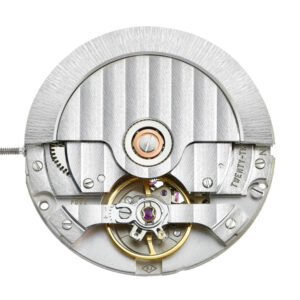 |
Brand: | Soprod | 




|
|---|---|---|---|
| Family: | |||
| Height: | 4.60 mm | ||
| Jewels: | 23 | ||
| Reserve: | 44 hours | ||
| Frequency: | 28,800 A/h | ||
| Winding: | Automatic | ||
| Diameter: | 25.60 mm (11.5 ligne) | ||
| Complications: | Date, Hacking Seconds, Quick Date Correction, Semi-Instantaneous Date Change | ||
| Hands: | Central Hour Hand, Central Minute Hand, Central Seconds Hand, Date Window at 3:00 | ||
| Distinguishing Technical Characteristics | |||||||||||
|---|---|---|---|---|---|---|---|---|---|---|---|
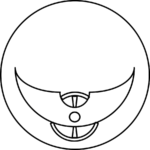 Balance Bridge  Screw Regulator |
|||||||||||
| Production: 2020 – Current | |||||||||||
| 1910s | 1920s | 1930s | 1940s | 1950s | 1960s | 1970s | 1980s | 1990s | 2000s | 2010s | 2020s |
Cal. P092 is a compact automatic Swiss movement with date. Produced by Soprod, it is the first member of their in-house “Newton” family of movements and is intended as an alternative to the popular ETA 2824-2 and Sellita SW200 Family. The initial Soprod Newton movement, identified as “P092” on the plate, is the first in a family of related movements from Soprod.
Soprod Newton Cal. P092 measures 11.5 ligne (25.60 mm) in diameter and is not especially thin, even for a central-rotor automatic, at 4.60 mm. It includes a date-only calendar with semi-instantaneous changes and quick adjustment using the crown, a stop-seconds device, and fast 28,800 A/h (4 Hz) operation. It has 23 jewels and is rated for 44 hours power reserve.
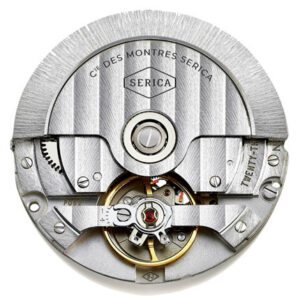
The Newton is used in the following watches:
- Serica 5303 (no-date version)
Soprod Newton Family Overview
Introduced in 2020, the Soprod “Newton” family is an inexpensive Swiss movement designed for mass production. It is a modern movement and does not appear to be related to the earlier Soprod A10 family, which was based on a Seiko design. Key elements include a full balance bridge supporting the exposed balance at 6:00, suggesting that an open heart version is also in the works.
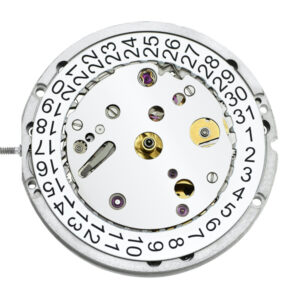
The Newton by Soprod is offered in two quality versions:
- “Sophisticated” – Plus or minus 7 seconds per day, adjusted in 3 positions
- “Top-Flight” – Plus or minus 4 seconds per day, adjusted in 5 positions
Each movement is tested by Dubois Laboratory and earns a “Chronofiable Certificate” after a number of tests.
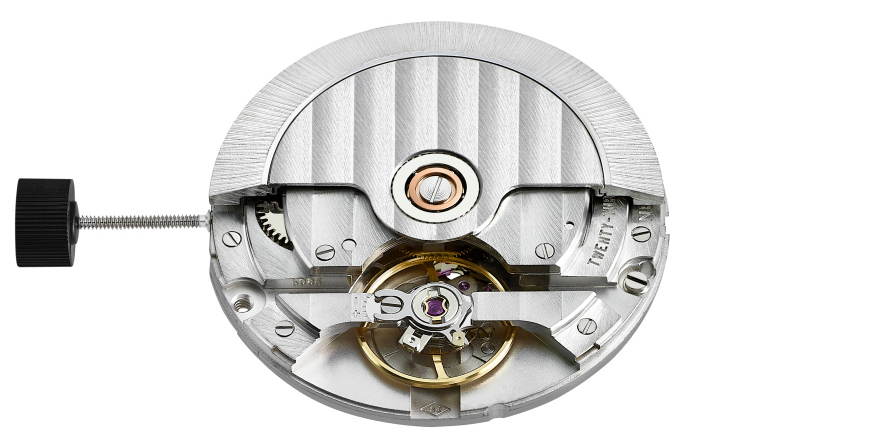
Soprod’s previous offering was an ultra-thin automatic based on the Seiko 4L25 design. Introduced in 2004, the Alternance 10 (later called A10 or M100) was a high-end movement with advanced features and a radically different design more competitive with the ETA 2892A2. In contrast, the Newton is thicker and more plain in design. Notable differences, apart from the use of a full balance bridge, include the location of most components below plates and bridges on the top and a single-screw rotor with five ball bearings (unlike the triple-screw, 7-ball A10). This places it in competition with the common ETA 2824-2 (and similar Sellita SW200-1) in mainstream watches. But the Newton is quite different in design from this movement as well, with a smaller balance on the opposite side and the bridge.